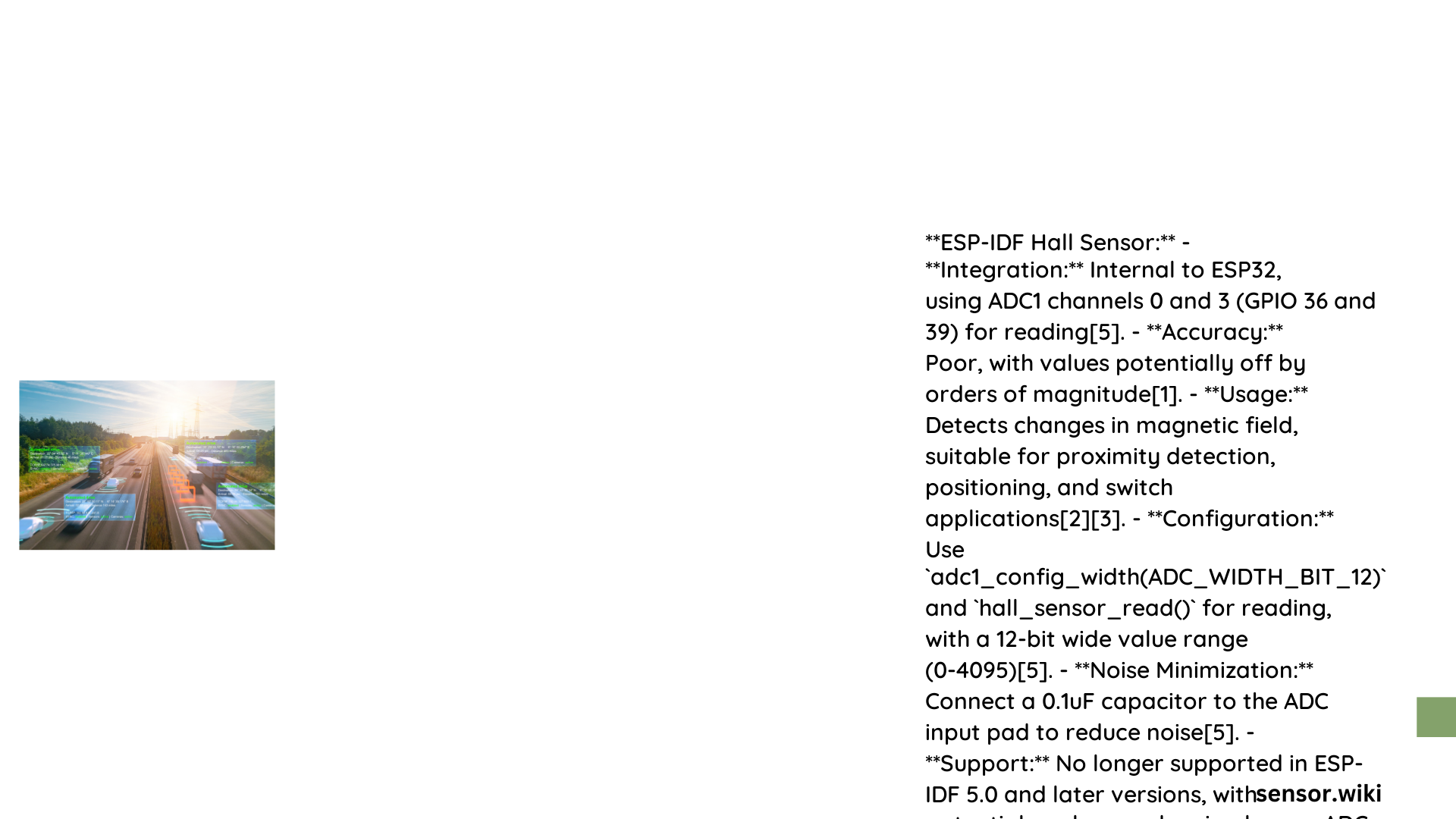The ESP32’s integrated Hall effect sensor provides a unique capability for detecting magnetic fields directly through its built-in ADC channels. This sensor, embedded within the microcontroller, allows developers to measure magnetic field variations without requiring external components, making it an incredibly versatile tool for projects involving magnetic field sensing, proximity detection, and rotational speed measurements. By leveraging the ESP IDF (Espressif IoT Development Framework), developers can easily access and configure this sensor for various applications.
What is the ESP IDF Hall Sensor?
The ESP IDF Hall sensor is a built-in magnetic field detection component integrated directly into the ESP32 microcontroller. Unlike external Hall effect sensors, this integrated solution uses ADC1 channels 0 and 3, specifically associated with GPIO 36 and GPIO 39.
Key Characteristics of ESP IDF Hall Sensor
| Feature | Description |
|---|---|
| Resolution | 12-bit ADC |
| Pins | GPIO 36 and GPIO 39 |
| Measurement Range | 0-4095 (Raw Values) |
| Power Consumption | Low |
How to Initialize the ESP IDF Hall Sensor?

To initialize the Hall sensor, you’ll need to configure the ADC and use specific ESP IDF functions. Here’s a comprehensive initialization process:
#include <driver/adc.h>
void hall_sensor_init() {
// Configure ADC width
adc1_config_width(ADC_WIDTH_BIT_12);
// Optional: Configure noise reduction
adc_power_acquire();
}
Essential Configuration Steps
- Include the
driver/adc.hheader - Set ADC width to 12-bit
- Use
adc_power_acquire()for stable readings
What Are the Practical Applications?
ESP IDF Hall sensors can be used in multiple scenarios:
- Rotational Speed Measurement
- Proximity Detection
- Magnetic Field Monitoring
- Position Sensing
How to Read Hall Sensor Values?
Reading Hall sensor values is straightforward using ESP IDF functions:
int read_hall_sensor() {
int hall_value = hall_sensor_read();
return hall_value;
}
Reading Interpretation
- Values range from 0-4095
- Higher/lower values indicate magnetic field changes
- Requires calibration for precise measurements
What Challenges Might You Encounter?
- Noise Sensitivity
- Use bypass capacitors (0.1uF)
- Implement multisampling
-
Avoid external interference
-
Limited Precision
- Not suitable for extremely accurate measurements
- Best for detecting magnetic field variations
Advanced Hall Sensor Techniques
Magnetic Field Change Detection
#define THRESHOLD 100
void detect_magnetic_changes() {
int current_value = hall_sensor_read();
static int previous_value = 0;
if (abs(current_value - previous_value) > THRESHOLD) {
// Significant magnetic field change detected
}
previous_value = current_value;
}
Recommended Best Practices
- Always configure GPIO 36 and 39 exclusively for Hall sensing
- Use multisampling to reduce noise
- Implement software-based filtering
- Calibrate sensor in your specific environment
Performance Considerations
- Low power consumption
- No external components required
- Integrated directly in ESP32
- Quick response time
Troubleshooting Tips
- Verify ADC configuration
- Check for external magnetic interference
- Use consistent power supply
- Implement error handling mechanisms
Reference:
– ESP-IDF Documentation
– Espressif Hall Sensor Guide
– Random Nerd Tutorials ESP32 Sensors
